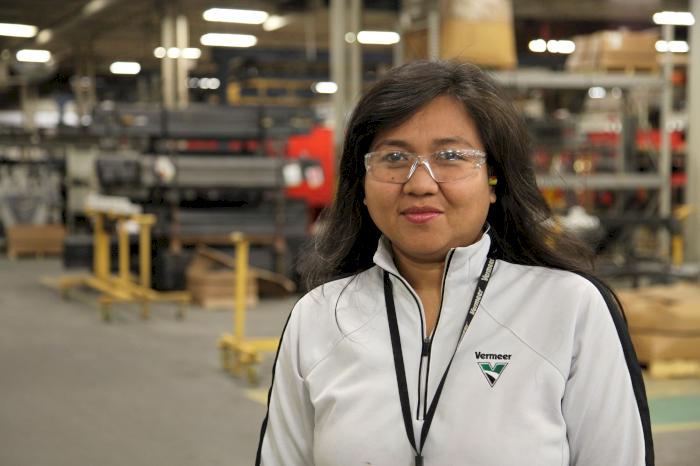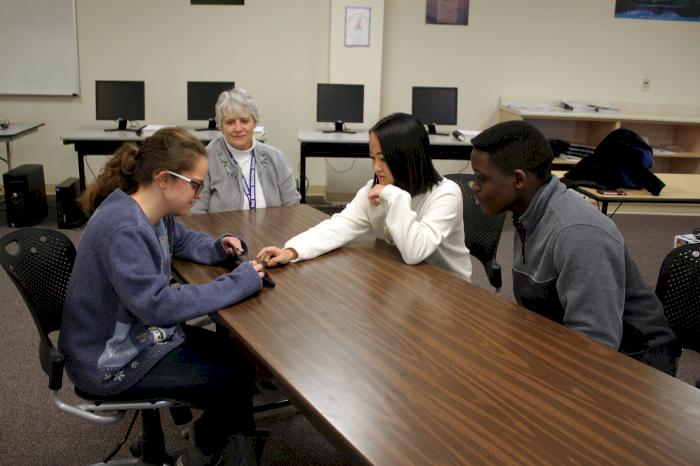STEM mentor builds steel structures and lifelong connections
- Friday February 5 2016
- STEM in DSM
Wanti Muchtar tagged along to construction sites starting at 5 years old, following her contractor father as he directed engineers in their Indonesian town. “Count the number of bricks to the top of the building,” he would say, giving his daughter her first engineering challenges. Muchtar looked on in awe as different materials united to form towering structures.
“When I was young, I thought it was really cool because you could build things from scratch,” she said. “I started to learn how the building process works. It’s fascinating.”
Counting bricks gave way to designing efficient, effective machinery and testing a variety of materials as a senior metallurgical engineer at Vermeer in Pella, where she has worked since 2011. Metallurgical engineers separate metals from their ores and adapt their shapes and properties to suit a variety of structures.
Global experiences guide Muchtar from Indonesia to Iowa
Muchtar’s path to Pella took a global route rooted in mentorship. After completing her undergraduate studies at the University of Indonesia, the island country’s lone institution for metallurgical engineering, Muchtar worked for two years as a technical support engineer at a steel manufacturing company before realizing she wanted to pursue a graduate degree.
After all, new materials and building techniques emerge frequently in her field, providing new opportunities to redefine the maker mindset. She quit her job, moved to Tokyo and earned her master’s and doctoral degrees in metallurgical engineering.
Muchtar’s specialty is adapting steel to build better structures, but metallurgical engineers work with a variety of materials — and we’ll need more in the future.
“You have polymers, you have ceramics, a lot of materials,” she said. “In the future, we’ll need a lot more materials scientists in different fields, especially in building and making things.”
Mentorship enriches engineering career
Inspiring the next generation of engineers is about more than inviting women and girls to build amazing structures. It’s also about building up young women through mentorship. Muchtar is a mentor through Vermeer’s Women in Manufacturing group and is involved with SCI’s Girls in Science Initiative. Mentorship is a lifelong commitment for Muchtar.
While she studied in Tokyo, Muchtar saw a promising high school student start to fall behind in her STEM classes.
“When young women are struggling with STEM education, they can start to think, ‘I don’t think I can do this,’” she said.
Muchtar supported the young woman throughout her studies. Later, she asked Muchtar for her recommendation to a Ph.D. program and completed her doctoral degree.
Whether she’s working with fellow engineers at Vermeer or future engineers at SCI’s Girls in Science Festival, Muchtar works to encourage young women at every stage of STEM discovery.
“Helping aspiring STEM professionals is an important role,” she said. “You want to share your time and look at these girls and ask, ‘What can I do for them?’”


